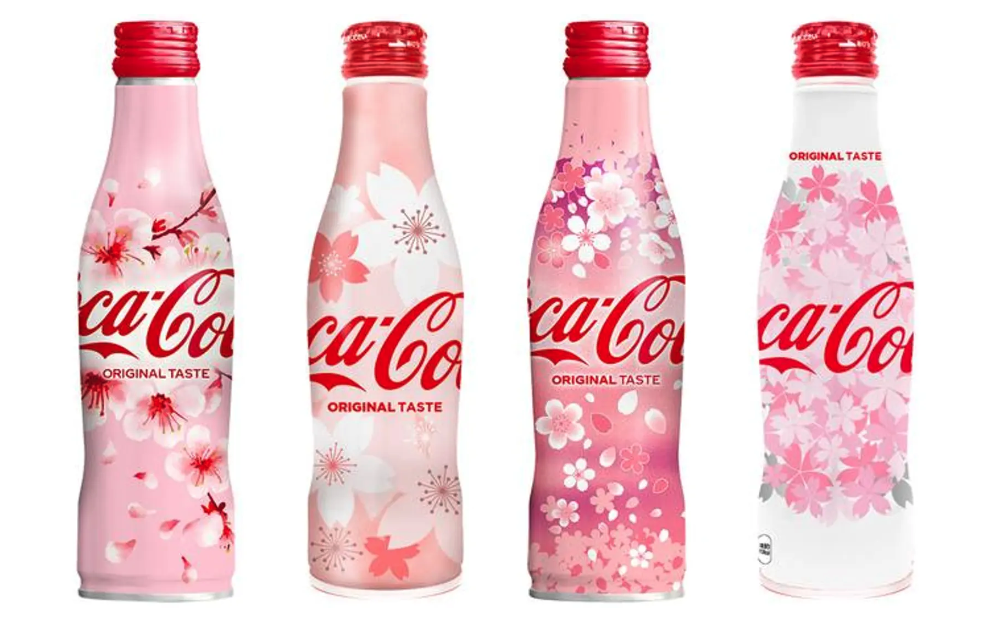Navigating the global market can be a daunting challenge.
Even the most successful businesses can struggle to connect with new audiences without a proper strategy.
This disconnect can lead to missed opportunities, brand misinterpretation, and even costly blunders.
But there’s a solution.
A localization strategy—a game-changing approach that transforms the way businesses expand globally.
It’s not just about translating content; it’s about crafting experiences that resonate with local audiences, ensuring your brand’s message is heard and felt.
This article explores the steps to developing a successful localization strategy, offering insights, tips, and real-world examples from top brands that have mastered the art of localizing their products and services.
What is a Localization Strategy?
A localization strategy is much more than a buzzword; it’s an essential part of your business strategy for international expansion. This approach involves customizing your product, service, or marketing materials to meet local markets’ specific demands and cultural nuances.
It’s about creating a localized experience that resonates with each target audience, ensuring your brand identity remains strong yet locally relevant.
Beyond Just Words: Comprehensive Localization
While high-quality language translation is a core component, a successful localization strategy requires a holistic view. It’s not just about changing the target language; it’s about diving deep into each target market’s cultural differences, purchasing habits, and even local legal requirements.
This means tailoring your content, product features, and marketing strategy to align with potential customers’ cultural preferences and behaviors in each new market.
Adapting to Local Needs
Effective localization goes beyond mere translation and localization of text. It involves a thorough understanding of the local community, adapting to local currencies and payment methods, and even tweaking your website content for local search engines.
For global growth, it’s essential to address the nuances of foreign markets, ensuring that your products and services are as appealing and accessible to a global audience as they are in your native market.
Building a Solid Foundation
Implementing a comprehensive localization strategy means considering every aspect of your product’s journey – from the initial translation process to localization testing in the local market.
It’s about creating marketing materials and social media strategies that speak directly to the local audience, using insights from in-country feedback to refine your approach continuously.
This process helps create a localized experience that feels natural and engaging to the local audience, contributing to the broader success of your global brand.
Importance of a Localization Strategy
Paving the Way for Global Growth
Venturing into international markets without a solid localization strategy is akin to navigating without a map. Sure, you’re moving, but are you heading in the right direction?
A comprehensive localization strategy is key to unlocking new markets and appealing to a global audience. It’s about making your brand relevant and attractive to diverse local markets, ensuring your message hits home wherever it lands.
Cultivating Connections Across Cultures
Successful localization isn’t merely about translating your marketing materials into the target language; it’s about speaking the language of the local culture. Understanding and respecting cultural differences is key to connecting with your target audience.
A well-crafted localization strategy bridges these cultural gaps, fostering trust and loyalty among potential customers in various target markets. It’s about delivering a localized experience that resonates with the local community and reflects their cultural preferences and purchasing habits.
A Harvard Business Review survey found that 90% of internet users prefer browsing websites in their native language when given the choice. This overwhelming preference underscores the critical role language plays in user engagement and satisfaction online, highlighting the importance of ensuring your online presence is accessible and understandable to your target market.
CSA Research has revealed that if individuals can’t comprehend the language of a website, they’re unlikely to make purchases from it. This highlights the importance of ensuring your online presence is accessible and understandable to your target market.
Tailoring to Local Needs for Broader Impact
An effective localization strategy goes beyond language translation; it encompasses adapting your content, products, and marketing strategy to suit local preferences and behaviors.
This means considering everything from local currencies and payment methods to the nuances of social media channels in different regions. By implementing localization efforts that are in tune with the local market, you create a brand identity that feels familiar and appealing to the local audience.
Building a Global Brand with Local Relevance
The goal is to achieve global growth while remaining locally relevant. A good localization strategy involves constant localization testing and adapting to feedback from the local community. It requires a deep understanding of the target markets, including stable and emerging ones, to effectively tailor your business strategy and website content.
This approach helps in building a global brand that understands and addresses the unique needs of each new target market.
The significant increase in the machine translation market, from nearly $982 million in 2022 to an expected $7.57 billion by 2032, highlights the essential role of technology in ensuring effective international communication.
By integrating machine translation into localization efforts, businesses can ensure that their messaging is both precise and culturally pertinent, thereby enhancing their global appeal while maintaining local relevance.
When Should You Create Your Global Localization Strategy?
The Sooner, The Better
When’s the ideal time to develop your localization strategy? Ideally, it would have been at the inception of your global vision.
However, the next best time is right now, particularly with an eye on both stable and emerging markets. Before you leap into the diverse world of international markets, having a solid localization strategy in place is essential.
Proactive Planning for Global Success
Integrating a comprehensive localization strategy into your overall business model from the beginning is essential. This proactive approach is not just about translating content into multiple languages; it’s about thoroughly understanding each target market’s cultural differences and customer behaviors.
It enables you to align your marketing strategy, product localization, and even website localization to different local audiences’ unique needs and preferences.
Staying Ahead in the Global Game
By incorporating localization efforts early, you’re not just playing catch-up; you’re setting the stage for a successful international expansion.
A good localization strategy accounts for the nuances of target languages, local markets, and potential customers, ensuring your brand identity resonates effectively across various foreign markets.
It’s about creating localized content that appeals to as broad an audience as possible, from the language translation process to adapting your social media channels and marketing materials to suit each new target market.
Tailoring to Local Needs
A successful localization strategy means understanding and addressing the specific needs of each new market, whether it’s adopting appropriate local currencies, considering local payment methods, or ensuring high-quality translation of your translated content.
It’s about creating a localized experience that feels authentic and engaging to your global audience, enhancing the customer experience, and ensuring your brand stands out in the competitive global landscape.
10 Tips to Build a Successful Localization Strategy
1. Understanding Your Target Market
To build a successful localization strategy, thoroughly research your target market. This means going beyond demographics and diving into their cultural nuances, preferences, and purchasing habits. Understanding these aspects helps tailor your product and marketing strategy to meet the specific needs of each new target market.
2. Emphasizing High-Quality Translation
Quality translation is key to effective localization, going beyond simple word-for-word translation to ensure the message resonates correctly in the target language. This approach avoids miscommunication and upholds your brand’s reputation.
It’s important to note that nearly 40% of marketers are now incorporating machine translation into their localization workflows, with a significant 83% satisfied with the quality of their translated materials.
This reflects the confidence in modern machine translation technologies to maintain, and sometimes enhance, content quality across languages. This trend highlights the importance of leveraging advanced tools for efficient and quality-assured localization processes.
3. Adapting to Local Culture
An effective localization strategy recognizes and adapts to cultural differences. What appeals to one market may not work in another. Study the local culture, values, and traditions to ensure your products and marketing materials are culturally sensitive and appropriate.
4. Collaborating with Local Experts
Local experts can provide invaluable insights into the local market. They understand the subtleties of the culture and can guide you in making informed decisions. Contact local consultants, marketers, or cultural advisors to fine-tune your localization efforts.
5. Rigorous Localization Testing
Testing is a critical step in the localization process. Conduct thorough localization testing before launching in a new market to ensure your product, website, or marketing materials are suitable and effective for the target audience. This helps identify cultural or linguistic issues before they impact the customer experience.
6. Maintaining Consistent Brand Identity
While localizing content, keeping your brand identity consistent across different markets is essential. Your brand should be easily recognizable but adapted to be locally relevant. This balance is key to maintaining brand integrity while appealing to a global audience.
7. Utilizing Localized Marketing Materials
Develop marketing materials specifically designed for each target market. This includes adapting your marketing strategy, website content, and social media channels to align with local preferences and trends. Localized marketing helps you connect more effectively with the local audience.
This approach’s value is proven by data showing that 86% of marketing efforts adapted to local languages and cultural nuances achieve better engagement and action rates than their English-only counterparts. This highlights the importance of shaping marketing content specifically for each audience.
This statistic not only emphasizes the effectiveness of localized marketing but also serves as a compelling argument for investing in the localization of marketing materials to improve engagement and conversion rates across diverse markets.
8. Monitoring Market Trends and Adapting
Markets are dynamic, and customer preferences can change. Regularly monitor market trends, customer feedback, and cultural shifts. Be ready to adapt your localization strategy to these changes to stay relevant and competitive in foreign markets.
9. Leveraging Local Social Media Channels
Different markets may have preferred social media platforms. Understand and leverage these local channels to engage with your target audience effectively. Tailored social media strategies can significantly enhance your reach and engagement in new markets.
10. Valuing Feedback from Local Communities
Feedback from the local community is necessary for refining your localization efforts. Listen to customer feedback, reviews, and in-country feedback to understand what works and what doesn’t. This direct input can guide your strategy and improve the overall customer experience.
Localization Strategy Examples from Top Brands
In international business, adapting to local markets is essential. Some of the world’s most successful brands have mastered this art, crafting localization strategies that resonate deeply with their target audiences. These brands don’t just translate their content; they transform it to reflect local culture, preferences, and values.
Let’s explore how some leading brands have successfully implemented localization strategies.
Coca-Cola: A Refreshing Take on Localization

Coca-Cola’s approach to localization goes beyond linguistic translation. In China, their famous slogan “Open Happiness” was adapted to emphasize family unity, aligning with a core value in Chinese culture. This strategic messaging shift demonstrates their commitment to cultural sensitivity.
Beyond slogans, Coca-Cola also customizes its product line to cater to local tastes. For instance, they’ve introduced unique flavors in different regions and designs, like Cherry Blossom bottles in Japan, aligning with the local palate and cultural events.
Netflix: Streaming Success Across Borders

Netflix excels in localizing content for international audiences. Their strategy includes not only subtitling and dubbing existing shows but also investing in original content that reflects local stories and talent.
They’ve produced popular Bollywood-style series and films in India, tapping into the country’s rich cinematic heritage. Netflix also personalizes the user experience by adapting its interface and recommendations to align with regional viewing habits, ensuring a more engaging and relevant service worldwide.
IKEA: Home Sweet (Localized) Home

IKEA’s success in diverse markets is partly due to its keen understanding of local needs and preferences. For example, Japan offers space-efficient furniture and storage solutions to accommodate smaller living spaces.
This level of adaptation extends to their marketing as well; IKEA’s catalogs and in-store displays are carefully curated to reflect the local lifestyle, ensuring their products are both appealing and practical for each specific market.
McDonald’s: A Menu of Localization

McDonald’s demonstrates localization excellence through its menu customization. Recognizing India’s dietary preferences and cultural norms, they introduced a range of vegetarian options, catering to the local vegetarian community.
Similarly, in Japan, McDonald’s blends local flavors with their global brand by offering items like the Teriyaki Burger. This localized menu approach allows McDonald’s to maintain its global brand identity while appealing to the unique tastes of each market.
Conclusion
A solid localization strategy is a powerful tool in the arsenal of any business seeking international expansion. It’s not just about language translation or marketing; it’s about deeply understanding and resonating with each target market’s unique cultural, legal, and consumer landscape. Businesses can create a strong connection with their audience by customizing products, services, and marketing strategies to align with local nuances, fostering trust and loyalty.
As businesses venture into new markets, embracing localization enhances brand appeal and customer experience and significantly contributes to sustainable growth and market penetration. As these examples show, the right approach to localization can transform a brand into a global phenomenon, deeply embedded in the cultural fabric of each market it touches.
Are you running global campaigns while embracing localization? Global campaigns can get complex – take a tour of Mediatool to see how all your global marketing campaigns can be managed from the same platform. Build your single source of truth and get clarity in your media data.





